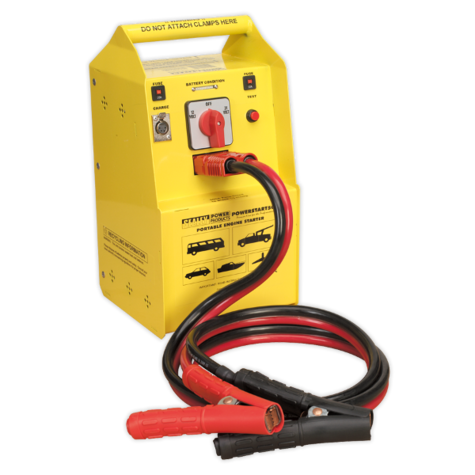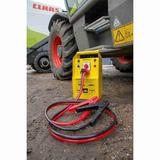Sealey POWERSTART500 12-24V Emergency Pack
£1650.42

Ask a Question
Product Information

PowerStart Emergency Power Pack 500hp Start 12/24V
- Heavy steel case, high power US manufactured battery and industrial quality switchgear make this model suitable for starting most vehicles.
- Positive action power switch reduces risk of inadvertent damage by over- voltage.
- Heavy-duty copper cables provide efficient power transfer.
- Twin trips prevent damage to battery or internal circuitry.
- Easy to read LED battery indicator to IEC51 provides fast indication of battery’s state of charge.
- Surge and spike suppressing circuitry reduces risk of damaging vehicle’s on board electronics.
- Fitted with charge balance circuitry to provide even charge to integral batteries.
- Supplied with mains voltage recharge unit.
- Make: Sealey
- Model No.: POWERSTART500
- Output Voltage: 12V/24V
- Maximum Engine Size: 500hp
- Peak Amps 12V: 4400A
- Peak Amps 24V: 2200A
- Cranking Current (20°C 5secs) 12V: 1700A
- Cranking Current (20°C 5secs) 24V: 850A
- Cold Cranking Current (-18°C 30secs) 12V: 700A
- Cold Cranking Current (-18°C 30secs) 24V: 350A
- Cable Size: 35mm²
- Cable & Clamp Length: 2.0mtr
- Weight: 22kg


